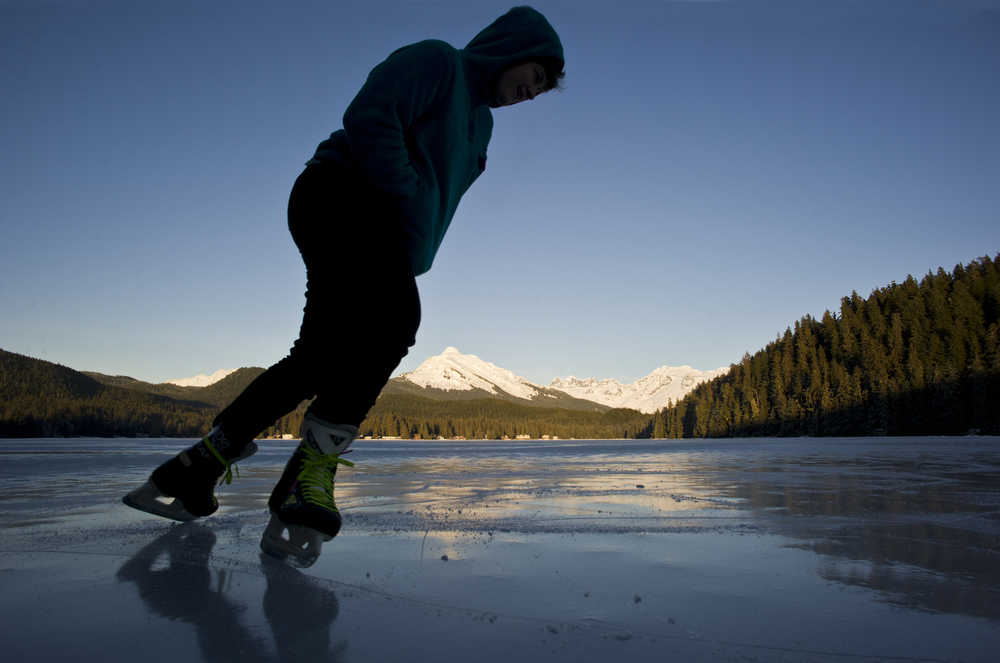Last year was the hottest ever seen in Alaska, and Juneau didn’t miss the trend. According to measurements taken by the National Weather Service at Juneau International Airport, the capital city’s average temperature was 44.8 degrees in 2016. That beats the old record, 44.5 degrees, set in 2015.
Record high annual temperatures were also recorded in Southeast at Sitka, Haines, Skagway, Yakutat and Annette Island, near Ketchikan.
Accurate measurements have been kept at the airport since 1936.
Why did Juneau set a new record?
“There’s a lot that goes into that,” said Weather Service forecaster Rick Fritsch, who works in Juneau. “Some of that is inter-annual variability, some of that is climate change.”
Much of Juneau’s record-warm year was driven by warmer waters in the Gulf of Alaska.
“The thing they’ve been calling ‘the blob,’” Fritsch said. “Really what it is — or was — was sea-surface temperatures several degrees celsius warmer than they should have been.”
Most of Juneau’s weather comes from the west, driven across the Gulf of Alaska. Warmer water below meant warmer air above.
In 2016, 75 percent of Juneau’s days had temperatures above normal. In Yakutat, it was 85 percent; in Sitka, 84 percent. An average year should have 50 percent.
As a result of the warm weather, Juneau saw its second-lowest calendar-year snowfall total.
“We came very close to setting a record-low snow record,” Fritsch said.
In 2016 (the second half of the 2015-16 snow season and the first half of the 2016-17 season), the airport measured 27.2 inches.
“Normally, we should be seeing 86 or almost 87 inches,” Fritsch said.
The record low is 23.4 inches, set in 1987.
In Juneau, the year was marked by a gradual decline toward average. January, February and March were all at least six degrees above normal; February was 7.5 degrees above normal.
Starting in April, the deviation began declining, and by September, it was only 1.2 degrees above normal. October, which finished 2.2 degrees below normal — Juneau enjoyed brilliant sunshine but lacked insulating clouds — was the first month to average below-normal temperatures since September 2015.
Temperatures rebounded to 3.6 degrees above normal in November but plummeted to 4.2 degrees below normal in December.
Looking ahead to 2017, the trend is toward a more average temperature year. The warm Gulf waters have receded, and the winter snowpack is deeper than it was last year. Combined, both factors should keep temperatures from reaching their 2016 peaks.
JUNEAU BY THE NUMBERS
• January: 6.6 degrees above normal
• February: 7.5 degrees above normal
• March: 6.1 degrees above normal
• April: 4.1 degrees above normal
• May: 3.2 degrees above normal
• June: 1.9 degrees above normal
• July: 2.8 degrees above normal
• August: 2.6 degrees above normal
• September: 1.2 degrees above normal
• October: 2.2 degrees below normal
• November: 3.6 degrees above normal
• December: 4.2 degrees below normal
LOCATION NEW RECORD OLD RECORD YEAR SET
Juneau Airport 44.8 44.5 2015
Annette Island 48.8 49.3 1993
Sitka Airport 48.6 47.4 1993
Haines Airport 44.3 43.7 1981
Skagway Airport 47.1 44.9 2015
Yakutat Airport 44.0 43.7 1981

